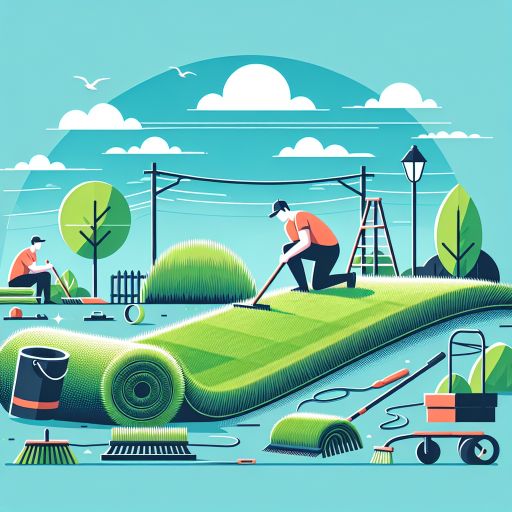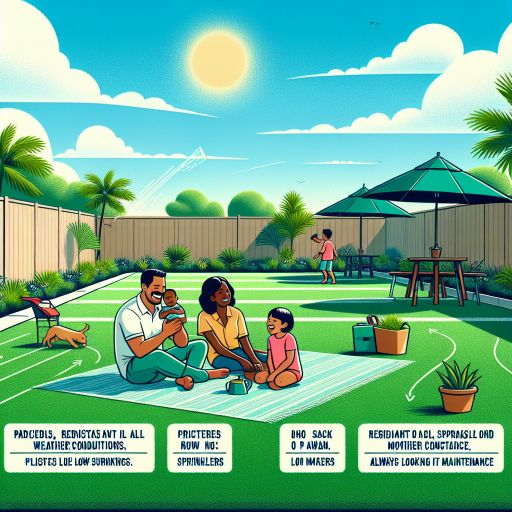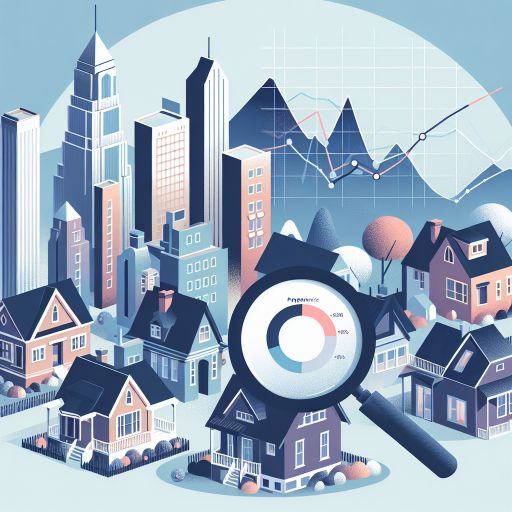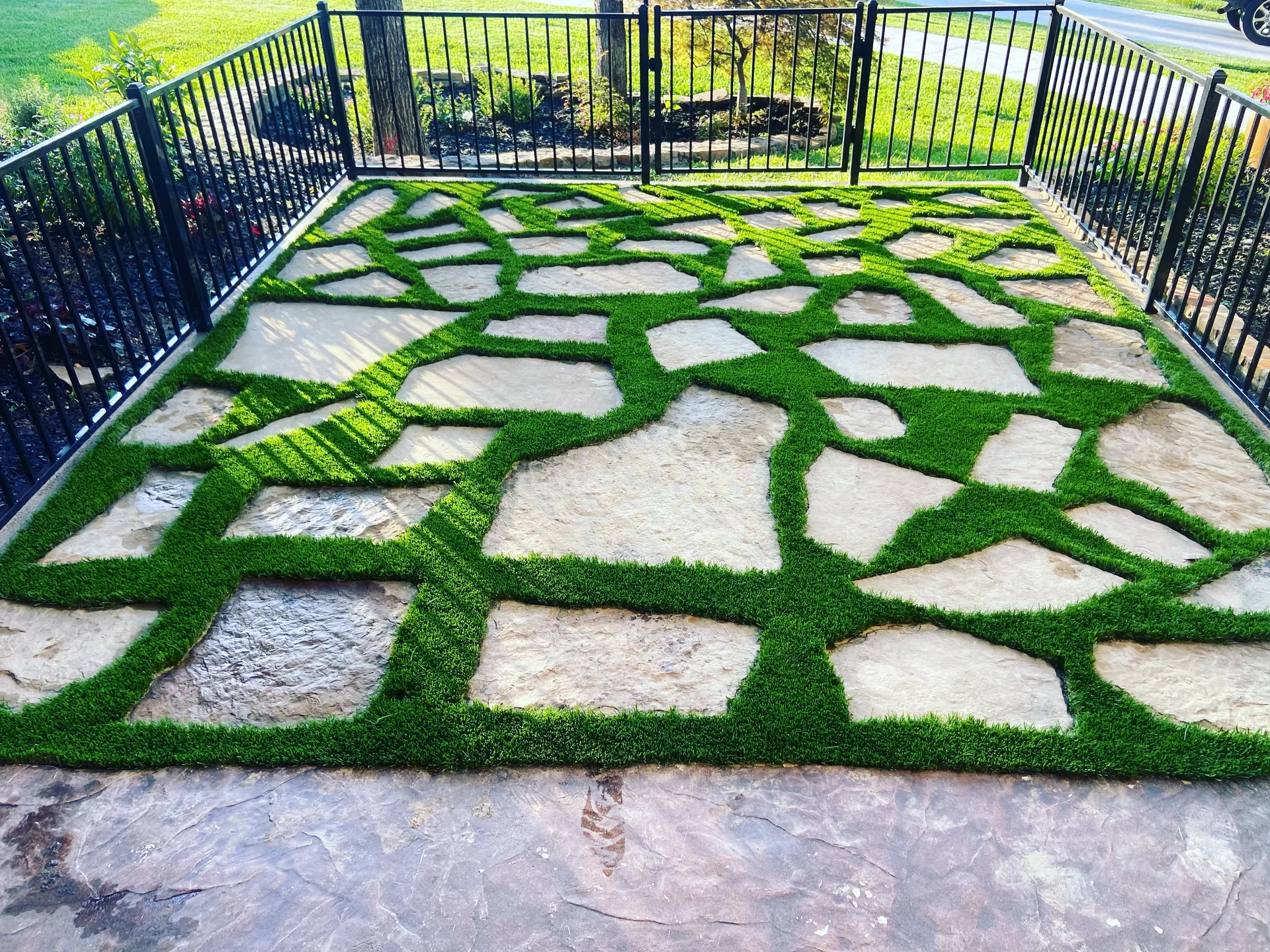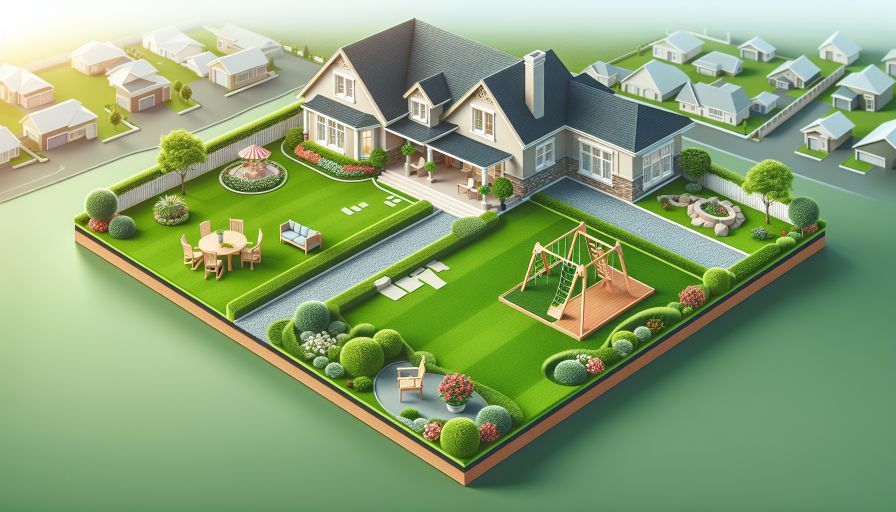
- Introduction to Artificial Turf in Residential Landscapes
- Cost-Benefit Analysis of Artificial Turf vs. Natural Grass
- Environmental Impact and Sustainability Considerations
- Maintenance and Longevity of Artificial Turf
- Aesthetic and Practical Advantages of Artificial Turf
- Health and Safety Aspects of Using Artificial Turf
- Economic Impact on Property Value: Case Studies and Data
- Future Trends and Innovations in Artificial Turf Technology
Introduction to Artificial Turf in Residential Landscapes
At Prime Design Turf, we believe in the transformative power of well-designed outdoor spaces. In the increasingly urbanized environment of the Dallas-Fort Worth area, maximizing home value through innovative landscaping solutions has become a priority for homeowners. One such solution is artificial turf, which offers an array of benefits for residential landscapes.
Artificial turf, also known as synthetic grass, has evolved significantly over the years. Initially developed for sports fields, technological advancements have made it a popular choice for home gardens, backyards, and other residential areas. The appeal lies in a combination of aesthetic, practical, and environmental benefits, which we will explore in detail throughout this article.
At Prime Design Turf, we have witnessed firsthand the positive impact that quality synthetic turf can have on a home. With over 20 years of experience, our team specializes in converting ordinary spaces into extraordinary ones. Whether it’s a vibrant lawn, a backyard putting green, a safe play area for children, or a pet-friendly zone, artificial turf provides an attractive and durable landscaping solution.
The installation of artificial turf is a meticulous process that ensures a natural look and long-lasting performance. Our expertise at Prime Design Turf includes a blend of creative design and detailed installation, setting us apart as a leader in the DFW turf industry. We pride ourselves on offering unbeatable prices and a commitment to personal service, ensuring that each project meets the unique needs and preferences of our clients.
In this chapter, we will provide a comprehensive introduction to the concept of artificial turf in residential landscapes. We will delve into its origins, development, and various applications within the home environment. Understanding these foundational aspects will set the stage for evaluating its cost-effectiveness, environmental impact, maintenance requirements, aesthetic appeal, and the potential economic benefits for homeowners.
As we proceed, it’s essential to approach the subject with an objective and fact-based mindset. Artificial turf is not a one-size-fits-all solution, but with careful consideration and expert guidance, it can be a valuable addition to many residential landscapes. Prime Design Turf is dedicated to helping homeowners make informed decisions, enhancing their outdoor spaces and, ultimately, increasing their property’s value.
In conclusion, artificial turf offers multiple advantages for residential landscapes, from its low maintenance needs to its year-round green appeal. At Prime Design Turf, we are committed to providing top-quality synthetic turf solutions that meet the diverse needs of homeowners in DFW. With a focus on quality, service, and innovation, we strive to transform outdoor spaces and maximize home value through artificial turf.
Cost-Benefit Analysis of Artificial Turf vs. Natural Grass
When considering the installation of artificial turf in residential landscapes, a thorough cost-benefit analysis is essential. This assessment provides an objective comparison between artificial turf and natural grass, focusing on the initial investment, long-term financial implications, and overall value added to the property.
Initial Costs
The initial cost of installing artificial turf is generally higher than that of establishing natural grass. According to industry data, the average cost of installing artificial turf ranges from $8 to $12 per square foot. This includes the cost of materials, labor, and site preparation. In contrast, the initial cost of planting natural grass is significantly lower, averaging around $0.50 to $2 per square foot when considering the price of sod or seed, soil preparation, and installation.
Long-Term Savings
Despite the higher initial cost, artificial turf offers substantial long-term savings. One of the primary financial benefits is the reduction in maintenance expenses. Natural grass requires regular watering, fertilization, mowing, pest control, and reseeding—all of which contribute to ongoing costs. Studies estimate that maintaining a natural grass lawn can cost homeowners between $1,000 and $2,500 annually. In contrast, artificial turf requires minimal maintenance, eliminating the need for watering, mowing, and the application of chemicals. Typical maintenance for artificial turf includes occasional brushing and infrequent washing, costing approximately $50 to $100 per year.
Water Usage and Cost
Water conservation is a significant factor when comparing artificial turf and natural grass. Natural grass lawns require substantial amounts of water, particularly in drier climates. According to the Environmental Protection Agency (EPA), the average American household uses around 320 gallons of water per day, with about 30% dedicated to outdoor uses. This figure can double in arid regions, leading to higher water bills. Artificial turf, on the other hand, does not require watering, leading to significant savings on water bills and contributing to environmental conservation efforts.
Durability and Longevity
Artificial turf is designed for longevity and durability, with high-quality products typically lasting between 15 to 25 years. This extended lifespan contributes to its long-term cost-effectiveness. Natural grass, while potentially lasting indefinitely, often needs portions to be reseeded or replaced periodically, which incurs additional costs over time.
Return on Investment (ROI)
The return on investment for artificial turf can be significant when factoring in the reduced ongoing costs and enhanced property appeal. Homes with well-maintained, low-maintenance landscaping, such as artificial turf, often have higher market values and quicker sales times compared to those with natural grass. The National Association of Realtors (NAR) suggests that landscaping improvements can offer returns of 100% to 200%, potentially offsetting the initial installation expenditure.
In conclusion, while the initial installation cost of artificial turf is higher compared to natural grass, the lower maintenance costs, water conservation, and long-term durability contribute to substantial financial benefits over time. The cost-benefit analysis suggests that artificial turf can be a sound investment for homeowners looking to maximize their property value while minimizing upkeep expenses.
Environmental Impact and Sustainability Considerations
Artificial turf offers several environmental benefits when compared to natural grass. Key among these is water conservation. According to the U.S. Environmental Protection Agency (EPA), outdoor water use, primarily for landscaping, accounts for nearly 30% of total residential water consumption in the United States. By using artificial turf, homeowners can significantly reduce this usage.
Artificial turf also eliminates the need for fertilizers and pesticides, which have been linked to various environmental issues. The runoff from these chemicals can contaminate local water supplies and harm wildlife. A transition to artificial turf can mitigate these risks, contributing to healthier ecosystems.
Another significant environmental benefit is the reduction in air pollution. Lawn mowers and other landscaping equipment are often powered by gasoline, releasing pollutants into the atmosphere. The EPA states that gas-powered lawn mowers contribute to volatile organic compounds (VOCs) and nitrogen oxides, which are key contributors to ground-level ozone formation, a harmful air pollutant.
While artificial turf does involve synthetic materials, recent advancements in manufacturing have made these products more sustainable. Many artificial turfs now incorporate recycled materials, and some companies have developed recycling programs for end-of-life turf, reducing the overall environmental footprint.
| Item | Environmental Impact |
|---|---|
| Water Use | Significant Reduction |
| Chemical Runoff | Eliminated |
| Air Pollution | Reduced |
| Material Sustainability | Improved with Recycling Initiatives |
Despite these advantages, it is essential to consider the production and disposal process of artificial turf. The manufacturing process can be energy-intensive, and improper disposal can contribute to landfill waste. However, the long lifespan of artificial turf—often 10 to 20 years—can offset some of these concerns when viewed over an extended period.
In summary, artificial turf presents several compelling environmental benefits, including water conservation, reduced chemical use, and lower air pollution. However, careful consideration of its lifecycle and disposal is crucial to fully leveraging its sustainability potential.
Maintenance and Longevity of Artificial Turf
Artificial turf is often touted for its ease of maintenance and long lifespan, making it a popular choice among homeowners. One of the primary advantages is the reduced need for maintenance activities compared to natural grass, which requires regular mowing, watering, fertilizing, and weed control.
Once installed, artificial turf maintenance primarily involves tasks such as removing debris, brushing the turf to prevent matting, and occasional washing to remove dust and odors. According to a study by the Synthetic Turf Council, regular maintenance can prolong the lifespan of the turf and keep it looking its best. Homeowners can expect to spend significantly less time and money on upkeep compared to natural grass lawns.
Regarding longevity, artificial turf can last anywhere from 15 to 25 years, depending on the quality of the materials used and how well it is maintained. Most manufacturers offer warranties ranging from 8 to 15 years. A report by the Sports Turf Research Institute indicates that high-quality artificial turfs tend to have better durability and can withstand high traffic without significant wear.
While the initial installation cost of artificial turf is higher than natural grass, the long-term savings become apparent over the lifespan of the turf. Traditional grass maintenance costs can add up quickly due to expenses related to water usage, lawn care products, and maintenance equipment. In contrast, the financial outlay for caring for artificial turf is minimal.
Besides the financial aspect, artificial turf also offers the benefit of being ready for use at all times, regardless of weather conditions. It does not suffer from muddy patches or dead spots that are common with natural grass, ensuring a consistent and aesthetically pleasing appearance year-round.
In summary, the low maintenance requirements and longevity of artificial turf make it an appealing alternative to natural grass. These characteristics not only save time and resources for homeowners but also contribute to sustained property aesthetics and functionality over extended periods.
Aesthetic and Practical Advantages of Artificial Turf
Artificial turf has seen a significant increase in popularity for residential landscapes, primarily due to its aesthetic and practical advantages. Homeowners are increasingly turning to artificial turf to enhance the appearance and functionality of their outdoor spaces.
One of the most notable advantages of artificial turf is its ability to maintain a lush, green appearance throughout the year. Unlike natural grass, which can become patchy and brown due to seasonal changes, weather conditions, or foot traffic, artificial turf remains visually appealing regardless of external factors. This consistency in appearance can greatly improve the curb appeal of a home, which is a critical factor in property valuation.
Additionally, artificial turf offers a level of durability that natural grass cannot match. High-quality artificial turf is designed to withstand heavy use, making it an ideal choice for households with children and pets. The resilience of the material ensures that the landscape remains in top condition, even in high-traffic areas.
The low maintenance requirements of artificial turf also present practical advantages. Homeowners no longer need to invest time and resources into mowing, watering, fertilizing, and pest control. This can lead to significant cost savings over time, as well as a reduction in the environmental footprint associated with landscape maintenance. The time and effort saved can be redirected towards other home improvement projects or leisure activities.
Furthermore, artificial turf can be tailored to meet the specific needs of the homeowner. It comes in a variety of textures and shades, allowing for customization to match the desired look and feel of the landscape. This flexibility extends to the installation process as well, where turf can be cut and shaped to fit any area, regardless of size or complexity.
The practical benefits of artificial turf extend to its compatibility with various climate conditions. In regions that experience extreme weather, such as intense heat or prolonged drought, maintaining natural grass can be challenging and costly. Artificial turf, however, remains unaffected by such conditions, ensuring a consistent and inviting outdoor space.
Another practical advantage is the reduction of allergens. Natural grass can be a significant source of allergens like pollen, which can cause discomfort for individuals with allergies. Artificial turf does not produce pollen, making it a hypoallergenic alternative that can contribute to a more comfortable living environment.
The following table highlights some of the key aesthetic and practical advantages of artificial turf over natural grass:
| Advantage | Artificial Turf |
|---|---|
| Consistent Appearance | Maintains lush, green look year-round |
| Durability | Resistant to wear and tear from foot traffic and weather |
| Low Maintenance | No need for mowing, watering, or fertilizing |
| Customization | Available in various textures and shades |
| Climate Resilience | Unaffected by extreme weather conditions |
| Allergen Reduction | Hypoallergenic, does not produce pollen |
In summary, the aesthetic and practical advantages of artificial turf make it an attractive option for homeowners looking to enhance the value and functionality of their residential landscapes. Its ability to maintain a beautiful appearance with minimal effort and withstand various environmental challenges makes it a smart investment for any home.
Health and Safety Aspects of Using Artificial Turf
When considering artificial turf for residential landscapes, understanding the health and safety aspects is crucial. Proper installation and maintenance of artificial turf can enhance its benefits while minimizing potential risks.
Health Benefits:
Artificial turf can offer several health benefits, particularly for individuals with allergies. Natural grass often harbors pollen, which can trigger allergic reactions. In contrast, artificial turf does not produce pollen, making it a hypoallergenic option. Furthermore, artificial turf can help reduce the presence of pests like ticks and fleas, which are common in natural grass environments.
Another advantage is the reduction of exposure to pesticides and fertilizers. Natural grass often requires chemical treatments to maintain its health and appearance. These chemicals can pose health risks, particularly for children and pets. Artificial turf eliminates the need for these substances, creating a safer environment.
Safety Considerations:
While artificial turf presents numerous benefits, it is essential to consider its safety implications. One primary concern is the temperature of the turf surface. Studies have shown that artificial turf can become significantly hotter than natural grass, particularly during summer months. This increased surface temperature can lead to discomfort and, in extreme cases, heat-related illnesses.
The following table compares the average surface temperatures of artificial turf and natural grass:
| Surface Type | Average Temperature (°F) |
|---|---|
| Artificial Turf | 130-170 |
| Natural Grass | 85-105 |
Additionally, concerns have been raised regarding the materials used in artificial turf. Some older artificial turfs contain crumb rubber infill, which is made from recycled tires. There has been debate about the potential health risks associated with exposure to chemicals in crumb rubber. However, many modern artificial turfs use alternative infills, such as sand or organic materials, to mitigate these concerns. It is advisable for homeowners to ensure that the artificial turf they choose utilizes safe and tested materials.
Another safety aspect to consider is the potential for injury. While artificial turf provides a consistent and level playing surface, it can sometimes be less forgiving than natural grass in terms of impact absorption. Studies have indicated that the risk of certain types of injuries, such as abrasions and turf burns, may be higher on artificial turf compared to natural grass. However, advancements in turf technology are continuously improving the shock absorption and safety features of artificial playing surfaces.
In conclusion, while there are health and safety considerations associated with artificial turf, the risks can often be mitigated through informed choices and proper maintenance. Homeowners should weigh these factors and consult with professionals to ensure their artificial turf installation is both safe and beneficial.
Economic Impact on Property Value: Case Studies and Data
Data and analysis of real estate markets reveal that installing artificial turf can positively impact property value. According to the National Association of Realtors (NAR), well-maintained landscaping, which includes features like artificial turf, can increase a home’s value by 5% to 15%. Given the growing interest in low-maintenance and sustainable landscaping solutions, the choice of artificial turf is becoming a favored option for many homeowners.
A study by the TurfMutt Foundation indicates that homes with attractive outdoor spaces, including those featuring artificial turf, tend to sell faster than those with poorly maintained landscapes. This is particularly significant in regions known for water scarcity or extreme weather conditions, making artificial turf an attractive alternative to natural grass.
Moreover, research by HomeLight provides insight into regional variations. For example:
- In arid regions like Arizona and Nevada, properties with artificial turf can see a more substantial increase in value due to the high cost of watering natural grass.
- In coastal areas prone to saltwater intrusion, artificial turf is beneficial as it is more resistant to damage compared to natural grass.
Additional data from the American Society of Landscape Architects (ASLA) supports the economic benefits of artificial turf. Their surveys suggest that low-maintenance landscaping features, such as artificial turf, are highly desired by both homebuyers and property investors. This preference reflects a broader trend towards sustainable and cost-efficient landscaping in the real estate market.
Data compiled from Property Value Impact studies shows that the return on investment (ROI) for installing artificial turf ranges from 10% to 20%, depending on the quality of the material and the installation process. Premium-grade artificial turfs that closely mimic the appearance of natural grass tend to offer higher ROI due to their aesthetic appeal and durability.
Additionally, SmartAsset reports that homes with upgraded landscaping, including artificial turf, are often appraised at higher values. Appraisers factor in the reduced long-term costs of maintenance and water usage, which is particularly appealing for buyers looking for property investment opportunities with minimized ongoing expenses.
In conclusion, the economic impact of artificial turf on property value is significant and multifaceted. Data from various studies and surveys consistently show that artificial turf not only enhances the immediate visual appeal of a property but also contributes to its overall market value. This makes artificial turf an attractive investment for homeowners seeking to maximize their property value while enjoying the benefits of low-maintenance and environmentally friendly landscaping solutions.
Future Trends and Innovations in Artificial Turf Technology
The field of artificial turf technology is continually evolving, driven by advances in materials science, engineering, and a growing awareness of environmental concerns. Several exciting trends and innovations are shaping the future of artificial turf, making it a more attractive option for residential landscapes.
One significant trend is the development of eco-friendly materials. Manufacturers are increasingly using recyclable and sustainable materials in the production of artificial turf. This shift not only reduces the environmental footprint of the turf itself but also aligns with broader sustainability goals. Innovations in this area include biodegradable turf fibers and recyclable backing materials.
An important innovation in artificial turf technology is the enhancement of infill materials. Traditional infill, like crumb rubber, has raised concerns regarding health and environmental impact. The industry is responding with alternatives such as coated sand, organic materials like cork, and thermoplastic elastomers. These new infill materials aim to provide the same benefits of cushioning and stability while mitigating health and environmental concerns.
Advancements in cooling technologies are another noteworthy development. Artificial turf can become significantly hotter than natural grass, which poses comfort and safety issues. New technologies, such as reflective pigments and cooling infills, are being incorporated to reduce surface temperatures. These innovations help keep the turf cooler and more comfortable during hot weather.
Many manufacturers are also focused on improving the durability and longevity of artificial turf. New fibers and construction techniques are being developed to make turf more resistant to wear and tear, UV radiation, and extreme weather conditions. These enhancements ensure that artificial turf maintains its aesthetic appeal and functional performance over a longer period.
Technological advancements in the realm of installation methods are making the process more efficient and less disruptive. Innovative underlay systems can improve drainage and provide better shock absorption, enhancing the overall performance and lifespan of the turf. These improvements also reduce installation time and labor costs.
The incorporation of smart technology is another emerging trend. Some modern artificial turf systems are embedded with sensors that can monitor turf conditions, such as moisture levels and wear patterns. These sensors facilitate the maintenance process by providing real-time data, ensuring the turf remains in optimal condition.
Finally, the ongoing progress in biophilic design, which seeks to integrate natural elements into urban environments, is influencing artificial turf development. By mimicking the appearance and feel of natural grass more closely, artificial turf can contribute to the aesthetic and psychological benefits associated with natural landscapes.
In conclusion, the future of artificial turf technology is vibrant, with numerous innovations aimed at enhancing its sustainability, performance, and aesthetic appeal. These advancements are making artificial turf an increasingly viable and attractive option for residential landscapes.
